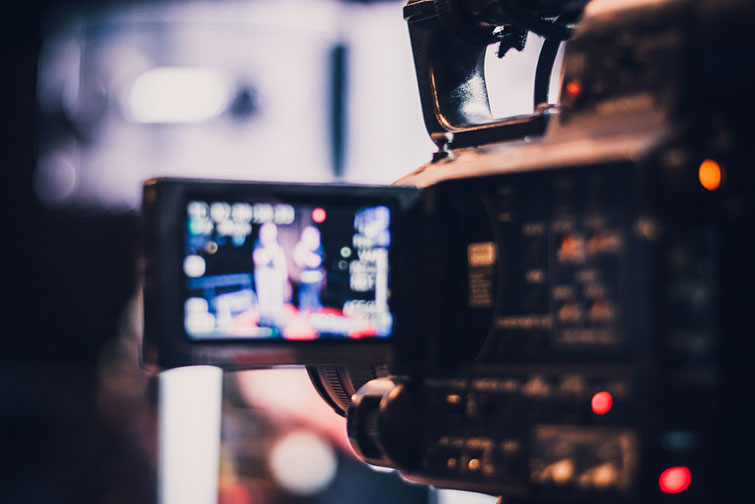
What to Consider When Buying Used Cameras and Gear
Buying used gear can be a great investment, but it can also involve risks. Let’s discuss which ones to take and which ones to avoid.
In today’s film and video marketplace, it feels like everyone’s chasing the latest, greatest cameras and trends. From Full HD to 4K at 60 fps to whatever the heck it is that people want to do with 8K internal recording. It seems like every few months there are some big announcements and big technical breakthroughs.
For a filmmaker or videographer simply looking to purchase a camera, it can be a bit overwhelming. You don’t want to go out and buy a new $3,000 camera just to see it become old news by the end of the week.
Because of this overflow on the market, many filmmakers who have saved and are ready to make an investment — big or small — a smart choice is often the used gear route. But buying used also means that you need to really research and know what you’re getting.
That is, if you’re cautious when considering all the risks that come with your used investments.
Make Sure You’re Actually Getting a Good Deal
So, before you dive into making a used gear investment, you’ll definitely want to do your due diligence and research the market. To start, you can always look up what every camera (or piece of equipment or gear) currently costs new. From there, you can also check around to get a ballpark estimate for the used piece of equipment.
Big wholesale websites like B&H and Adorama can be good places to start. But for used, it might be best to check around on Amazon and Ebay, as well. From there, you should start to understand what used gear is actually worth.
BUT! For many of these resale websites, used gear is actually refurbished, and often represents at least some type of care. Once you start shopping around from friends, colleagues, or just through online marketplaces like Craigslist or Facebook, you’re really dealing with true USED gear that hasn’t been touched up, or perhaps even tested, recently.
As such, the price should drop. You should never pay the same price for something used as you would new. And, it might very well be best to not even pay the “used” price online for a used camera from a friend — without checking it out first, that is.
Check the Sensor

Image via Hayati Kayhan.
If and when you do get a chance to check a camera out in person, you’re going to want to look it over as thoroughly as possible. But one part that you should absolutely be sure to check out is the sensor. Cosmetic damages to cameras or gear should be easy to identify, but any small scratches or build-up inside the camera could be the biggest problem.
When you can, inspect the sensor from the outside first for any noticeable damage. From there, you can give it an actual test.
Record Test Footage
Having bought used cameras for both video and photography, for me, this seems to be pretty standard practice and probably the best way to test to make sure the secondhand gear you’re investing in is truly functional and working properly. For photography, you can simply take some test photos. Try to shoot at different F-stops and get some shots of clean backgrounds — like a blue sky or a white wall. This’ll help you when inspecting the images to see if there are any dots or blemishes.
For video, you can try the same things, but of course, by actually recording video. Try recording at different frames per second. Try different lenses. (If you can, bring your own lenses to make sure they fit, as well.) Try, as best as possible, to replicate your intended workflow with the new camera or gear. If you can, bring your own cards and laptop so that you can make sure the footage will upload and isn’t damaged for your edits.
Read Reviews for Common Problems

Image via SKphotographer.
Along with your initial research into pricing for your used gear and cameras, it is also helpful to research reviews to find common problems associated with cameras that could pop up after a couple years. Make a list of all the potential issues that people have reported, and ask if any of those problems (or warning signs of those problems) have been noticed with the gear.
Check Shutter Count (If Applicable)
While not always an issue with all video cameras, for many DSLRs back in the day, checking the shutter count for your hybrid video and photo cameras was perhaps the biggest piece of information about just how much wear and tear the camera had. It might not be the true equivalent of miles from the odometer of a car, but it’d at least give you an idea of just how often a camera has been used.
If you’re looking strictly at video cameras, you can ask about its usage. Red flags to look out for are cameras or gear that have been used in extreme weather conditions (hot or cold), as well as in sandy environments like on the beach or on long hikes or trips.
You’ll perhaps never know the true story of your used cameras or gear, but if you follow these steps and ask the right questions, you should mitigate the chances of investing in a piece of gear that might break down on you well before you expected.
Cover image by nampix.
For more film and video gear advice and tips, check out these articles below.






